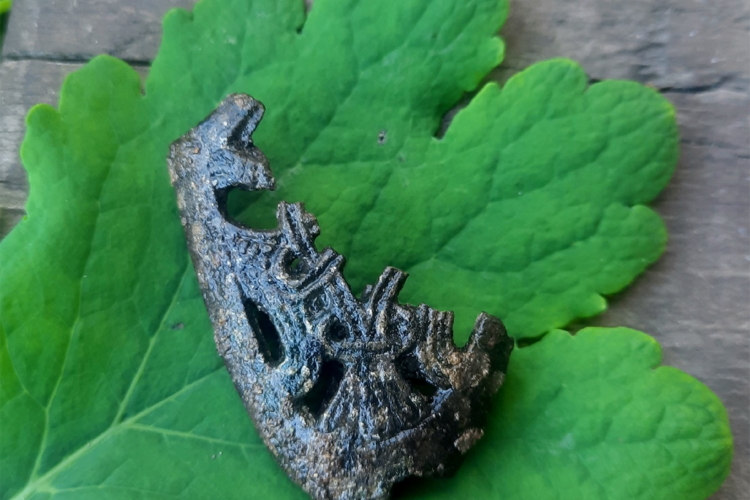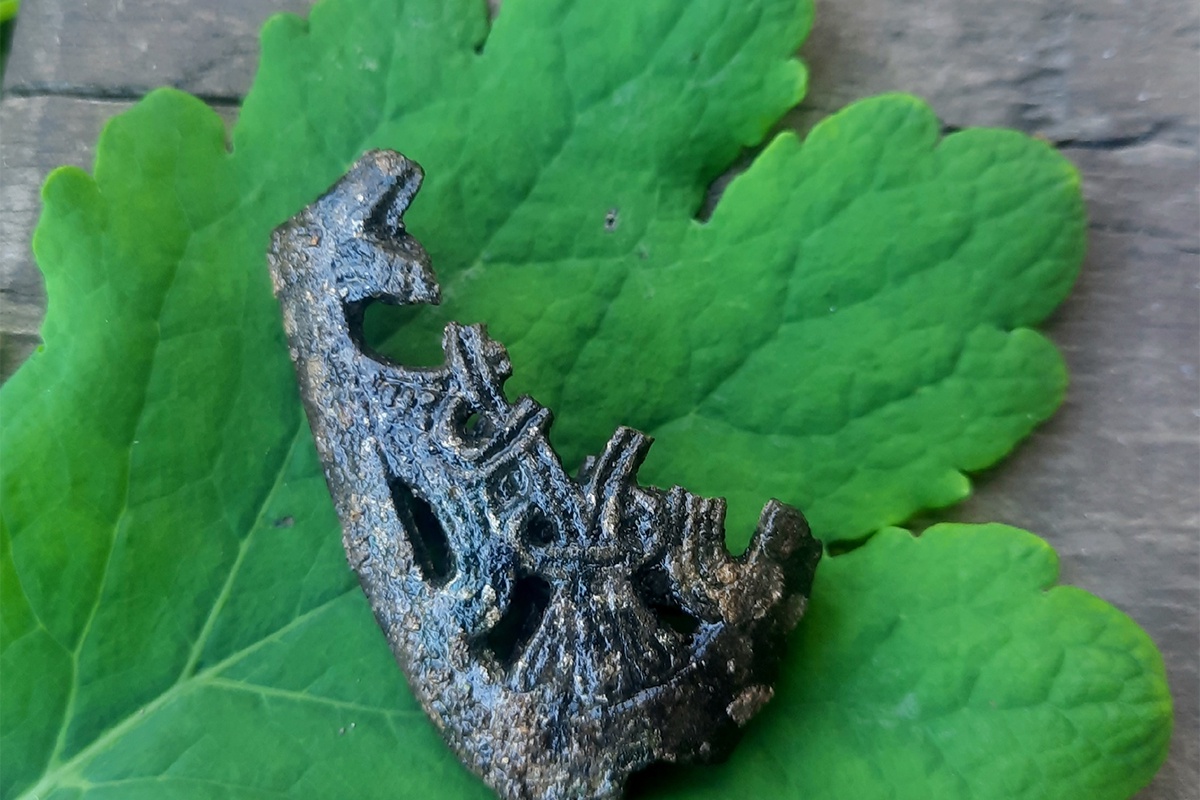Archaeologists find rare 10th century artifact in Murom
Published: by .

In Murom, at an excavation site in the Oka Park, a fragment of a cast openwork tip of a sword sheath was discovered. It is dated to the second half of the 10th century.

vk.com/Valentin Beilekchi
A fragment of a cast openwork tip of a sword scabbard from an excavation in Murom.
This is the first time that such an element of military equipment has been discovered in the cultural layer of Murom. This was reported by the head of the archeology department of the "Center for Cultural and Historical Heritage" of the Murom District Administration, archeologist Valentin Beylekchi.
The ornamental motif of the fragment contains an image of combined figures of a bird and a man. There are few known analogies in the style of ornamentation in the territory of Ancient Rus: Troitsky IV excavation in Novgorod, Gnezdovo (two copies), the settlement of Krutik.
Not counting the ancient Russian finds, at least 13 of them have been found in Europe. Researchers divide such arrowheads into "high" and "low". The Murom arrowhead is classified as "low", which narrows the range of analogies. This is the Troitsky IV excavation in Novgorod, at least four examples in the territory of settlement of the Baltic tribes.
Such tips, according to experts, could have been made either by Scandinavian craftsmen or by craftsmen who used the Scandinavian technological tradition of openwork casting.
The terms "high" and "low" refer to the tips of sword sheaths – elements of military equipment of the 10th-11th centuries. Researchers divide the tips into these groups by height and ornamentation. The ornamentation is stylistically identical. The dating of the "low" tips, according to researchers, fits within the framework of the second half of the 10th century, closer to the end of the century.
Comments